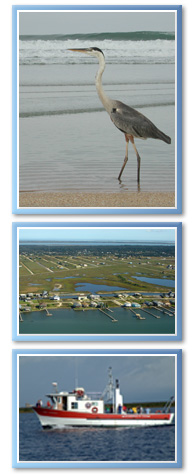 |
 |
 |
 |
 |
|
|
How are Estuaries Connected to My Life?
 |
 |
| |
- Estuaries are important parts of our lives; interconnected to our economy, hobbies and culture, and an important part of our coastal and ocean ecosystems.
- Estuaries provide commercial economic benefit to the U.S. in the form of seafood sales and jobs.
- Recreational activities – such as fishing, birding, boating and hiking – are enjoyed by millions of Americans each year in estuaries bringing income to coastal communities.
- Estuaries offer cultural importance to Americans. They are often city and trade centers, they are an important source of food, the buffer communities from storm surges, and they have a long history of cultural use by Native Americans.
- Estuaries are vital ecosystems providing diverse habitat and nursery areas for many important organisms.
- Because we are all connected to the nation’s coasts, our activities have many affects on estuaries, many of which are negative.
- Anthropogenic disturbances to estuaries include coastal development, introduction of invasive species, pollution via runoff, over fishing, dredging and filling, dams and global climate change.
- From government agencies and laws – established to protect estuaries – to volunteer citizens groups, our coasts are protected, restored and conserved in many ways.
- There are many things you can do around your home an in your community to keep estuaries clean.
Want to Learn More?
- Estuaries are Vital to Humans
- Commercial Economic Benefits
- Humans Activities Impact Estuaries
|
Last Updated on: 06-12-2008
|
|
|
|